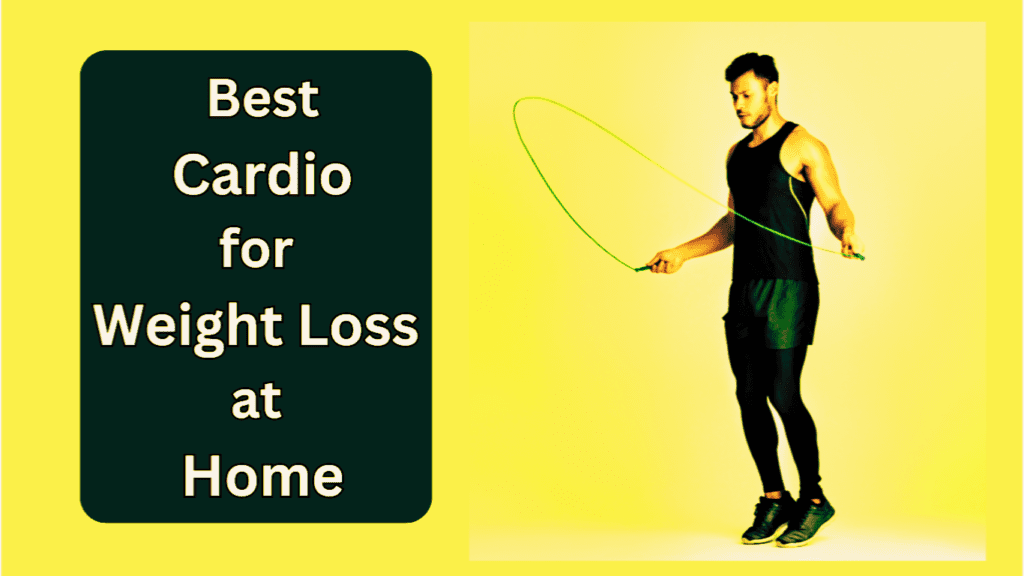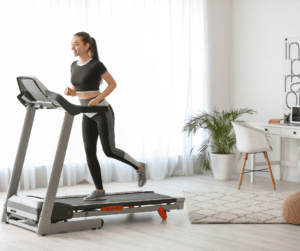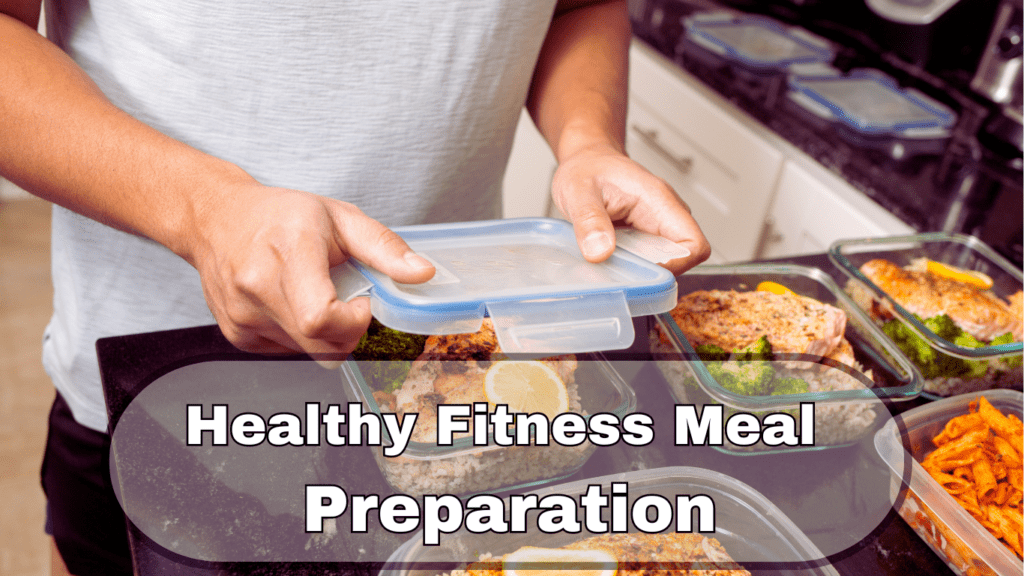Best Cardio for Weight Loss at Home in Details
In the ongoing quest for a healthier lifestyle, cardio stands out as a reliable ally for many fitness enthusiasts. It’s like that dependable friend who quietly supports you along the way, aiding in the pursuit of weight loss. If you’ve been searching for the best cardio for weight loss at home, you’re in the right place. Here, we’ll explore various cardio exercises that can truly make a difference in shedding those stubborn pounds from the comfort of your living room.
Imagine this: it’s a bright morning, and you’re sitting on your couch, thinking about your fitness goals. Maybe you want to fit into your favorite jeans or simply feel better in your own skin. Whatever your reason, the goal of achieving a fitter, healthier you is something we can all relate to.

Now, let’s get to the heart of the matter. Today, we’re demystifying cardio, which plays a vital role in combating weight gain. But before we jump into the details, let’s take a moment to understand what cardiovascular exercise really means.
Cardiovascular exercise, or cardio for short, includes activities that get your heart rate up and keep it elevated for a sustained period. This can include brisk walking, cycling, dancing, or even jumping jacks—anything that gets your blood pumping and your breath quickening.
Subscribe And Get Our Free E-Book:Unlocking The Power Of Nutrition-Supplements, Substitutes, and Superfoods!
But why all the talk about cardio? Well, cardio isn’t just about sweating; it’s about kickstarting your metabolism. When you do cardio, you’re not only burning calories during the workout but also boosting your metabolism afterward. It’s like stoking a fire in your body, turning it into a calorie-burning machine.
And here’s the thing: cardio isn’t just good for burning fat; it’s also great for your heart. By regularly challenging your cardiovascular system, you can improve your heart health and reduce the risk of diseases like heart disease and stroke.
Now, let’s address a few misconceptions about cardio and weight loss. Firstly, cardio alone won’t magically transform your body overnight. Sustainable weight loss requires a balanced approach that includes a healthy diet, strength training, and yes, cardio.
Additionally, more isn’t always better when it comes to cardio. While it’s tempting to push yourself harder and longer in pursuit of quicker results, overdoing it can lead to burnout and injuries. It’s important to find a balance that challenges your body without overtaxing it.
So, there you have it—the basics of cardio and its role in weight loss. With this knowledge, you’re ready to embark on your fitness journey with confidence. Stay tuned as we explore the best cardio exercises for burning calories and sculpting your body—all from the comfort of your own home. It’s time to work smarter, not harder, and unlock your body’s true potential.
Exploring the Benefits of Home Cardio
Ah, the beauty of doing cardio at home—it’s like having a personal gym right at your fingertips, minus the hefty membership fees and commute. Today, we’re diving into the wonderful world of home cardio workouts and uncovering the myriad benefits they offer for weight loss and overall well-being.
First off, let’s talk convenience. Picture this: you roll out of bed, slip into your workout gear, and voila! You’re ready to sweat it out without ever leaving the comfort of your home. No need to brave the elements or battle rush-hour traffic—just pure, uninterrupted exercise bliss.
But wait, it gets better. Not only is home cardio convenient, but it’s also incredibly cost-effective. Say goodbye to pricey gym memberships and hello to saving those hard-earned dollars for something else. With a few basic pieces of equipment, like a jump rope, resistance bands, or even just your own body weight, you can create a killer cardio routine that rivals any fancy gym setup.
And let’s not forget about flexibility. When you work out at home, you’re the master of your own schedule. Whether you prefer to get your sweat on first thing in the morning, during your lunch break, or late at night, the choice is yours. No more squeezing in workouts between meetings or rushing to make it to that group fitness class on time—just pure, unadulterated freedom.
Of course, like anything worth doing, home cardio workouts come with their own set of challenges. One common hurdle is staying motivated without the accountability of a gym or workout buddy. But fear not, dear reader, for there are plenty of solutions at your disposal. Set specific, achievable goals for yourself, track your progress, and reward yourself for hitting milestones along the way. You can also enlist the support of friends or family members to keep you accountable and motivated.
Another challenge is finding the space and equipment to create an effective home workout environment. But fear not, for you don’t need a fancy home gym to get a great cardio workout. Look for creative ways to utilize the space you have, whether it’s clearing out a corner of your living room or taking your workout outside to the backyard or local park. As for equipment, start with the basics and gradually add to your collection as you progress. Remember, it’s not about having the latest gadgets or fancy machines—it’s about getting moving and breaking a sweat.
Home cardio workouts offer a host of benefits for weight loss and overall health. From convenience and cost-effectiveness to flexibility and freedom, working out at home allows you to take control of your fitness journey on your own terms. So dust off that jump rope, crank up the music, and get ready to sweat your way to a healthier, happier you—all from the comfort of your own home.
25 Minute Home Cardio Workout, No Equipment Video
Selecting Effective Home Cardio Exercises for Weight Loss
When it comes to shedding those extra pounds and achieving your fitness goals, cardio exercises play a vital role, especially when done at home. In this guide, we’ll explore the process of selecting the best cardio exercises for weight loss, considering factors such as calorie burn, effectiveness, accessibility, and safety.
Calorie burn is a key aspect to consider when choosing cardio exercises for weight loss at home. The more calories you burn during your workout, the closer you get to your desired weight. Effective cardio exercises should elevate your heart rate and keep it up for an extended period, ensuring optimal calorie expenditure.
Effectiveness goes beyond calorie burn; it encompasses how well an exercise targets multiple muscle groups, improves cardiovascular health, and enhances overall endurance. The best cardio exercises for weight loss should provide a comprehensive workout that strengthens your body while burning fat.
Accessibility is crucial, especially for home workouts. The chosen exercises should be easily accessible to all fitness levels, require minimal equipment, and be adaptable to different spaces. This ensures that anyone can engage in effective cardio workouts regardless of their circumstances.
Safety is paramount in any exercise routine. The selected cardio exercises should minimize the risk of injury while still delivering maximum results. Proper form and technique are essential for preventing injuries, so it’s crucial to understand and execute each exercise correctly.
Now, let’s present the top 15 cardio exercises for weight loss, ranked from 15 to 1 based on our evaluation criteria:
- Walking: While it may seem simple, walking is an effective low-impact exercise that can be done anywhere. Aim for brisk walking to increase calorie burn and elevate your heart rate.
- Cycling: Whether you’re cycling outdoors or using a stationary bike at home, cycling provides an excellent cardiovascular workout while being gentle on the joints.
- Jumping Jacks: This classic exercise gets your heart pumping and engages multiple muscle groups. Start with a moderate pace and gradually increase speed for an added challenge.
- High Knees: Stand in place and alternate lifting your knees as high as possible while pumping your arms. This exercise not only burns calories but also improves coordination and strengthens the lower body.
- Jump Rope: Grab a jump rope and start skipping for a high-intensity cardio workout that improves coordination and agility. Start with short intervals and gradually increase duration as you build endurance.
- Dancing: Whether you follow along with a dance workout video or dance to your favorite tunes, dancing is a fun and effective way to burn calories while improving mood and coordination.
- Kickboxing: Kickboxing combines cardio, strength training, and agility drills for a challenging full-body workout. Practice proper form and technique to maximize calorie burn and minimize the risk of injury.
- Rowing: If you have access to a rowing machine, take advantage of this full-body workout that targets the arms, legs, and core. Focus on maintaining proper form throughout the exercise to prevent strain and injury.
- Running: Lace up your sneakers and hit the pavement for a classic cardio workout that burns a significant number of calories. Start with short intervals of running and walking if you’re new to running, then gradually increase intensity and duration as you build endurance.
- Stair Climbing: A challenging cardio workout that targets the lower body and elevates the heart rate. Focus on using proper form and technique to prevent tripping or falling.
- Jump Squats: Amp up your squats by adding a plyometric jump for an extra calorie burn. Start with shallow jumps and gradually increase height as you build strength and confidence.
- Swimming: A low-impact cardio exercise that works the entire body while providing an excellent cardiovascular workout.
- Burpees: A full-body exercise that combines strength training and cardio for maximum calorie burn and muscle engagement.
- Jumping Rope: An efficient cardio exercise that burns calories, improves coordination, and boosts cardiovascular health.
- Mountain Climbers: The best cardio exercise for weight loss at home. This dynamic exercise targets the core, shoulders, and legs while elevating your heart rate for a calorie-burning, full-body workout.

Now that we’ve explored the benefits of various cardio exercises, let’s take a closer look at how they stack up in terms of calorie burn. Below is a comparison chart showcasing the estimated calorie expenditure for each exercise per 30 minutes. Use this information to tailor your home workout routine to your fitness goals and preferences.
Calorie Burn Comparison of Cardio Exercises
| Exercise | Calorie Burn per 30 Minutes (approx.) | Intensity | Equipment Needed | Impact |
|---|---|---|---|---|
| Walking | 120-180 calories | Low | None | Low |
| Cycling | 200-300 calories | Moderate | Bike | Low |
| Jumping Jacks | 150-200 calories | High | None | Moderate |
| High Knees | 180-250 calories | High | None | Moderate |
| Jump Rope | 250-400 calories | High | Jump Rope | Moderate |
| Dancing | 200-300 calories | Moderate | None | Low |
| Kickboxing | 300-450 calories | High | None | Moderate |
| Rowing | 250-350 calories | High | Rowing Machine | Low |
| Running | 300-450 calories | High | None | High |
| Stair Climbing | 250-400 calories | High | Stairs | High |
| Jump Squats | 200-300 calories | High | None | High |
| Swimming | 250-350 calories | High | Pool | Low |
| Burpees | 250-400 calories | High | None | High |
| Jumping Rope | 250-400 calories | High | Jump Rope | Moderate |
| Mountain Climbers | 200-300 calories | High | None | High |
Note: Calorie burn estimates are based on a person weighing around 155-160 pounds. Actual calorie expenditure may vary depending on factors such as weight, intensity, and individual metabolism.
Incorporate these top 15 cardio exercises into your fitness routine to maximize calorie burn, improve cardiovascular health, and achieve your weight loss goals. Remember to focus on proper form and technique, listen to your body, and progress at your own pace. With dedication and consistency, you’ll be well on your way to a fitter, healthier you!
In-Depth Analysis of Top 5 Cardio Exercises
When it comes to achieving weight loss goals from the comfort of your own home, selecting the best cardio for weight loss at home is crucial. In this segment, we’ll delve into an in-depth analysis of the top five cardio exercises previously outlined, each offering its unique set of benefits and challenges.
- Jump Squats: Let’s start with jump squats, a powerful exercise that combines the benefits of squats with the explosive movement of a jump. By incorporating plyometric movements, jump squats elevate the heart rate, torch calories, and build lower body strength. Beginners can start with shallow jumps and gradually increase height as they gain confidence. Variations include adding weights or performing single-leg jump squats for an added challenge.
- Swimming: Next up is swimming, an excellent low-impact cardio exercise that engages the entire body. Swimming not only burns calories but also improves cardiovascular health and builds muscle strength. Whether you’re doing laps in a pool or swimming in open water, the resistance provided by the water adds an extra challenge to your workout. Variations include different strokes such as freestyle, backstroke, breaststroke, and butterfly, each targeting different muscle groups.
- Burpees: Burpees are a full-body exercise that combines strength training with cardio, making them an efficient calorie burner. This compound movement targets multiple muscle groups, including the arms, chest, core, and legs, while also elevating the heart rate for maximum calorie burn. Beginners can start with modified versions, such as step-back burpees, and gradually progress to full burpees as they build strength and endurance. Variations include adding a push-up at the bottom or a jump at the top for an added challenge.
- Jumping Rope: Jumping rope is a classic cardio exercise that burns calories, improves coordination, and boosts cardiovascular health. It’s a simple yet effective way to get your heart pumping and your body moving. Whether you’re a beginner or an experienced jumper, there are endless variations and modifications to keep your workouts fresh and challenging. Beginners can start with basic jumps and progress to more advanced techniques such as double unders, criss-crosses, and high knees.
- Mountain Climbers: Last but certainly not least, we have mountain climbers, the best cardio exercise for weight loss at home. This dynamic exercise targets the core, shoulders, and legs while elevating the heart rate for a calorie-burning, full-body workout. Mountain climbers can be performed at various speeds and intensity levels to suit your fitness level and goals. Beginners can start with slow, controlled movements and gradually increase speed as they build strength and endurance. Variations include cross-body mountain climbers, spider mountain climbers, and mountain climber jumps for an added challenge.
To maximize calorie burn and achieve optimal results with each of these exercises, it’s essential to focus on proper form and technique. Maintaining good posture, engaging the core muscles, and breathing rhythmically can help you get the most out of your workout. Additionally, incorporating interval training, where you alternate between periods of high-intensity exercise and rest, can further boost calorie burn and improve cardiovascular fitness.
By incorporating these top five cardio exercises into your home workout routine, you can effectively torch calories, improve cardiovascular health, and work towards your weight loss goals. Remember to listen to your body, start at a pace that feels comfortable for you, and gradually increase intensity as you build strength and endurance. With dedication and consistency, you’ll be well on your way to achieving the results you desire.
Best Cardio for Weight Loss at Home: Crafting Your Ideal Routine
When it comes to achieving weight loss goals from the comfort of your own home, structuring a well-rounded cardio workout routine is key. In this segment, we’ll discuss how to incorporate the best cardio for weight loss at home into a balanced regimen that promotes fat burning, improves cardiovascular health, and supports overall well-being.
Frequency: To reap the benefits of cardio exercise, aim for at least 150 minutes of moderate-intensity aerobic activity or 75 minutes of vigorous-intensity aerobic activity per week, as recommended by health authorities. This equates to about 30 minutes a day, five days a week, or shorter, more intense sessions three days a week. Consistency is key, so try to spread your cardio workouts throughout the week to maintain momentum and maximize results.
Duration: The duration of your cardio workouts will depend on your fitness level, goals, and personal preferences. Start with shorter sessions and gradually increase duration as your endurance improves. Aim for at least 20-30 minutes per session, but feel free to extend your workouts if you’re enjoying yourself and feeling good. Remember, every minute counts towards your overall fitness and weight loss goals.
Intensity: The intensity of your cardio workouts is crucial for maximizing calorie burn and improving cardiovascular fitness. Incorporate a mix of moderate-intensity and high-intensity exercises to challenge your body and keep your workouts interesting. Pay attention to your heart rate and perceived exertion to gauge intensity levels. Moderate-intensity exercises should make you breathe harder and sweat, while high-intensity exercises should make it difficult to carry on a conversation.

Progression: As you become more comfortable with your cardio routine, don’t be afraid to push yourself and progress to more challenging exercises or increase the intensity of your workouts. Gradually increase the duration or intensity of your workouts, incorporate new exercises or variations, and set achievable goals to keep yourself motivated and engaged. Remember to listen to your body and make adjustments as needed to avoid burnout or injury.
Healthy Diet: While cardio exercise is an essential component of weight loss, it’s crucial to pair it with a healthy, balanced diet to see optimal results. Focus on consuming nutrient-dense foods such as fruits, vegetables, lean proteins, whole grains, and healthy fats. Avoid processed foods, sugary snacks, and excessive calorie intake, as these can hinder your weight loss efforts.
Hydration: Staying hydrated is essential for supporting your body’s performance during cardio workouts and promoting overall health. Drink plenty of water before, during, and after your workouts to replenish fluids lost through sweat and prevent dehydration. Avoid sugary sports drinks and opt for plain water or electrolyte-enhanced beverages to stay hydrated and energized.
Recovery: Adequate rest and recovery are essential for allowing your body to repair and rebuild muscle tissue, replenish energy stores, and recover from intense workouts. Incorporate rest days into your weekly routine to give your body time to recuperate and prevent overtraining. Prioritize quality sleep, practice stress-reduction techniques such as meditation or deep breathing, and consider incorporating active recovery activities such as yoga or gentle stretching to promote recovery and relaxation.
Safety Guidelines: When performing cardio exercises at home, it’s essential to prioritize safety to prevent injuries and ensure a positive workout experience. Always start with a thorough warm-up to prepare your muscles and joints for exercise, and finish with a cool-down to help your body recover and reduce muscle soreness. Pay attention to proper technique and form during exercises to avoid strain or injury, and modify or progress exercises as needed to suit your fitness level and abilities. If you have any underlying health conditions or concerns, consult with a healthcare professional before starting a new exercise routine.
Potential Risks: While cardio exercises offer numerous benefits, it’s essential to be aware of any potential risks or limitations associated with certain exercises, especially if you have pre-existing health conditions or injuries. High-impact exercises such as jumping or running may exacerbate joint pain or discomfort, so consider low-impact alternatives such as cycling or swimming if you experience any issues. Listen to your body and adjust your workouts accordingly to avoid injury and ensure a safe and effective exercise experience.
In conclusion, structuring a balanced cardio workout routine at home is essential for achieving weight loss goals, improving cardiovascular health, and enhancing overall well-being. By incorporating the best cardio exercises into your routine, maintaining a healthy diet, staying hydrated, prioritizing recovery, and following safety guidelines, you can create a sustainable fitness regimen that supports long-term success. Remember to listen to your body, stay consistent, and celebrate your progress along the way. With dedication and commitment, you’ll be well on your way to achieving your fitness goals and living a healthier, happier life.
Structuring Your Cardio Workout Routine
| Aspect | Recommendation | Examples of Exercises | Tips for Implementation |
|---|---|---|---|
| Frequency | Aim for at least 150 minutes of moderate-intensity aerobic activity or 75 minutes of vigorous-intensity aerobic activity per week. This can be achieved through 30-minute sessions, five days a week, or shorter, more intense sessions three days a week. Consistency is key. | Brisk walking, cycling, swimming, jogging, dancing | Schedule workouts in advance, consider morning or lunchtime sessions, find activities you enjoy |
| Duration | Start with 20-30 minute sessions and gradually increase duration as your endurance improves. Aim for at least 20-30 minutes per session, but feel free to extend your workouts if you’re enjoying yourself and feeling good. | Cycling for 30 minutes, jogging for 20 minutes, dance workout videos | Use a timer or fitness app to track time, gradually increase duration by 5-10 minutes per week |
| Intensity | Incorporate a mix of moderate-intensity and high-intensity exercises to challenge your body. Moderate-intensity exercises should make you breathe harder and sweat, while high-intensity exercises should make it difficult to carry on a conversation. Pay attention to your heart rate and perceived exertion to gauge intensity levels. | Moderate: brisk walking, cycling High: jogging, jump rope, HIIT workouts | Use the talk test (ability to speak comfortably) to gauge intensity, monitor heart rate with a fitness tracker |
| Progression | As you become more comfortable with your cardio routine, gradually increase the duration or intensity of your workouts. Incorporate new exercises or variations, and set achievable goals to keep yourself motivated and engaged. Listen to your body and make adjustments as needed to avoid burnout or injury. | Increase jogging time by 5 minutes weekly, add intervals to cycling, try new cardio workouts like kickboxing or rowing | Keep a workout journal to track progress, set SMART goals (Specific, Measurable, Achievable, Relevant, Time-bound), listen to your body and rest when needed |
Note: Always prioritize safety and listen to your body during workouts. Consult with a healthcare professional before starting a new exercise routine, especially if you have any underlying health conditions or concerns.


